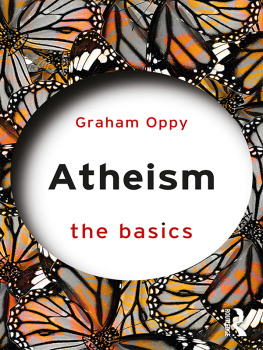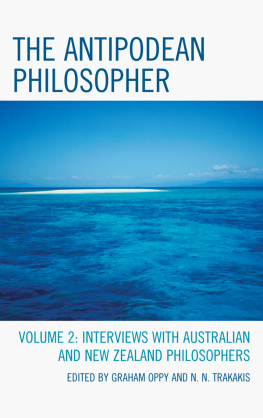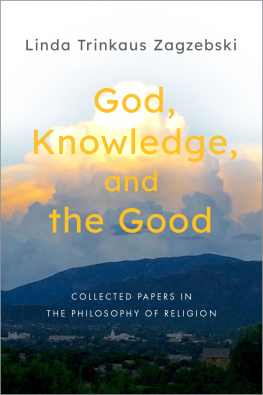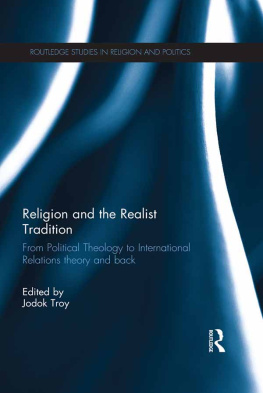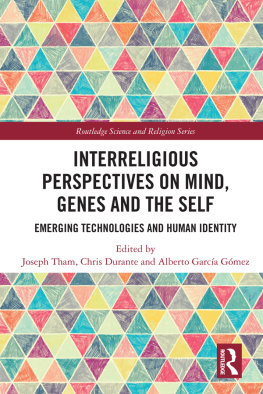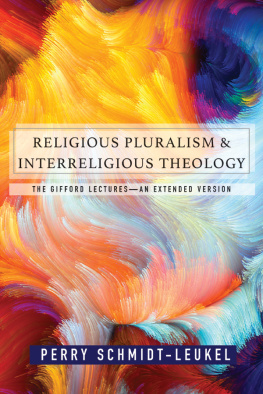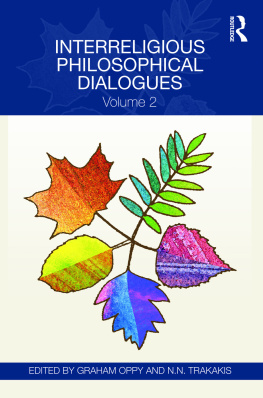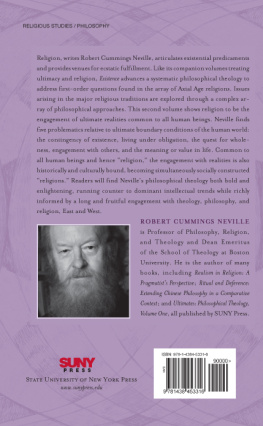First published 2018
by Routledge
2 Park Square, Milton Park, Abingdon, Oxon OX14 4RN
and by Routledge
711 Third Avenue, New York, NY 10017
Routledge is an imprint of the Taylor & Francis Group, an informa business
2018 selection and editorial matter, Graham Oppy and N. N. Trakakis; individual chapters, the contributors
The right of Graham Oppy and N. N. Trakakis to be identified as the authors of the editorial material, and of the authors for their individual chapters, has been asserted in accordance with sections 77 and 78 of the Copyright, Designs and Patents Act 1988.
All rights reserved. No part of this book may be reprinted or reproduced or utilised in any form or by any electronic, mechanical, or other means, now known or hereafter invented, including photocopying and recording, or in any information storage or retrieval system, without permission in writing from the publishers.
Trademark notice: Product or corporate names may be trademarks or registered trademarks, and are used only for identification and explanation without intent to infringe.
British Library Cataloguing-in-Publication Data
A catalogue record for this book is available from the British Library
Library of Congress Cataloging-in-Publication Data
A catalog record for this book has been requested
ISBN: 978-1-138-23721-6 (hbk)
ISBN: 978-1-315-11547-4 (ebk)
ISBN: 978-1-138-23718-6 (4 volume set)
Typeset in Sabon
by Apex CoVantage, LLC

Religious believers of a certain conservative bent, whether they be simple followers of the faith, or leaders of a religious community, or scholars and theologians, have a distinct tendency to downplay or dismiss the value of discussion and dialogue with individuals and groups of alternative religious faiths (or no faith at all). Even when dialogue is entered into by such believers, it is rarely with the express purpose of seeking to place their own assumptions, beliefs and principles under scrutiny, to have them seriously challenged and even possibly overthrown. Rather, there is either a proselytizing mission of converting the other to ones own faith tradition, or and this is perhaps more common nowadays within ecumenical circles only a desire of seeking a better understanding of the others beliefs and practices, where this might be underwritten by a broader practical or political goal, such as joining together to promote common goods, the public interest or the welfare of the whole, or alternatively to combat common enemies including acts of terrorism, natural disasters, illness or disease, gender and racial inequality, and so on. There is little doubt that centuries-old barriers of misunderstanding, prejudice and animosity between religious communities can be and are being broken down through genuinely open and frank dialogue and also solidarity on the ground in cooperative grassroots projects. But is this as far as we can go? On the theoretical front, is there nothing more that can be achieved from interreligious dialogue than a better (more accurate and more sympathetic) understanding of the history, teachings and practices of the various religions of the world? Is the only model for such dialogue the famous Augustinian Anselmian precept of faith seeking understanding ( fides quaerens intellectum ), where the faith itself is for all intents and purposes hermetically sealed from challenge or disruption? Indeed, for some hardliners, such as Wittgensteinian fideists and John Milbanks school of Radical Orthodoxy, even the project of seeking understanding is viewed as futile or problematic, since religious language-games are incommensurable (or, at least, have limited commensurability) and so can only be understood, appreciated and evaluated from within. This, as Milbank has proclaimed, spells the end of dialogue.
Philosophers, however, tend to take a very different route, one inspired by the gadfly of Athens, Socrates. This provocative approach to philosophical problems, known as the elenchus (literally, examining, testing), had Socrates subjecting his fellow Athenians to a prolonged process of questioning that inevitably infuriated many of them, in large part because it showed up their complacent ignorance and dogmatism. Following Socrates lead, philosophers often adopt a dialogical model in their inquiries that places everything up for debate, including ones own highly cherished beliefs, whether they be religious or not. This is not necessarily an advocacy of complete skepticism (though even this cannot be excluded from the beginning and may even function as a starting point in the manner of Descartes meditations); nor is it a vain attempt to philosophize absent any cultural, historical or epistemic horizons. Rather, it is a methodology aimed at overcoming unwarranted biases and blind spots in ones thinking with the hope of arriving at a position that is closer to the truth. Various pressures in contemporary academia, under the influence of the neoliberal ideals of efficiency and productivity, are placing the dialogical model of inquiry at risk. But a delightful (some would say quaint) account of what this model looks like in practice is provided by Alvin Plantinga in a festschrift to his one-time colleague at Wayne State University in the late 1950s and early 60s, Hector-Neri Castaeda. Plantinga reminisces:
In those days the Wayne philosophy department Nakhnikian, Castaeda, and Gettier the first year, then the next year Robert Sleigh and I, and then a bit later Richard Cartwright and Keith Lehrer was less a philosophy department than a loosely organized but extremely intense discussion society. We discussed philosophy constantly, occasionally taking a bit of time to teach our classes. These discussions were a sort of moveable feast; they would typically begin at 9:00 A.M. or so in the ancient house that served as our headquarters and office. At about ten oclock the discussion would drift over to the coffee shop across the street, where it consumed an endless quantity of napkins in lieu of a blackboard. Here it would remain until about lunch time, when it moved back to someones office. Of course people drifted in and out of the discussions; after all, there were classes to teach.
This vigorous exchange of ideas, at its best, is not an attempt to defeat ones opponent, to score points as in a debating contest and come out victorious. Although this adversarial approach is notoriously common in philosophical and religious discussions, our goal in these volumes has been to create space for discursive exchanges marked by a charitable and cooperative search for understanding and truth. This implies a conception of interreligious dialogue as a form of conversation , a talking-with rather than a talking-to, being prepared to listen to the other, to study deeply their texts and traditions, perhaps even imaginatively empathizing with them, walking as far as possible in their shoes in the manner envisioned by phenomenological and hermeneutic approaches to religion. These are approaches which emphasize the importance of description, understanding and interpretation, at least as a first step in coming to terms with or making sense of what is presented by the other. This need not entail a philosophical quietism that, as Wittgenstein advocated, leaves everything as it is. Explanation, evaluation and judgement, as indicated earlier, are fundamental to the academic and especially the philosophical study of religion. But judgement cannot be immediate or uninformed, otherwise difference and otherness are dissolved or reduced to our terms of reference rather than respected and appreciated in their irreducible particularity. This indeed was Milbanks fear: that dialogue merely masks the hegemonic aspirations of western liberal secularism. Ironically, however, Milbanks substitution of philosophical dialogue with theological contestation reinforces these arbitrary and violent hegemonic and homogenizing tendencies, this time in the name of a premodern Christian worldview that refuses to consider other religious faiths (and secularism) in any other way except through a Christian lens.


